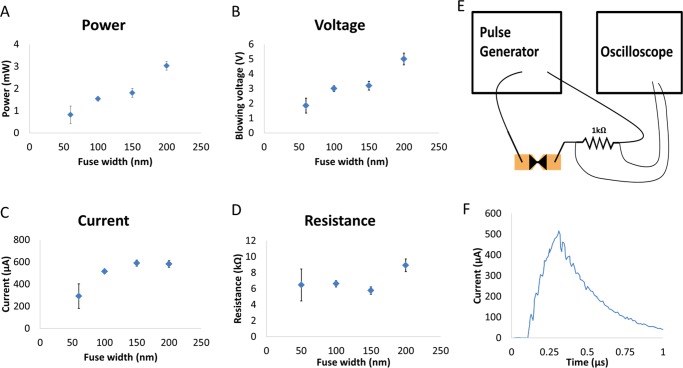Figure 5.
Electrical requirements to write data as a function of fuse width. (A) Using the maximum current and voltage the nanofuses could handle before they broke, the power it takes to blow the fuses was found. The resistances of the fuses were obtained by averaging the voltage and current for each fuse. (B) Voltage required to blow a nanofuse. (C) Current requirements to blow a nanofuse. (D) Resistance of the nanofuses. (E, F) Schematic of short-pulse writing setup, with graph of a nanofuse blowing quickly. (E) A voltage pulse is applied to the carbon nanofuse, and an oscilloscope measures the voltage over a 1 kΩ resistor to get the current and shape of the pulse. (F) Current passing through the 1 kΩ resistor during the pulse, resulting in fuse blow within 300 ns.

